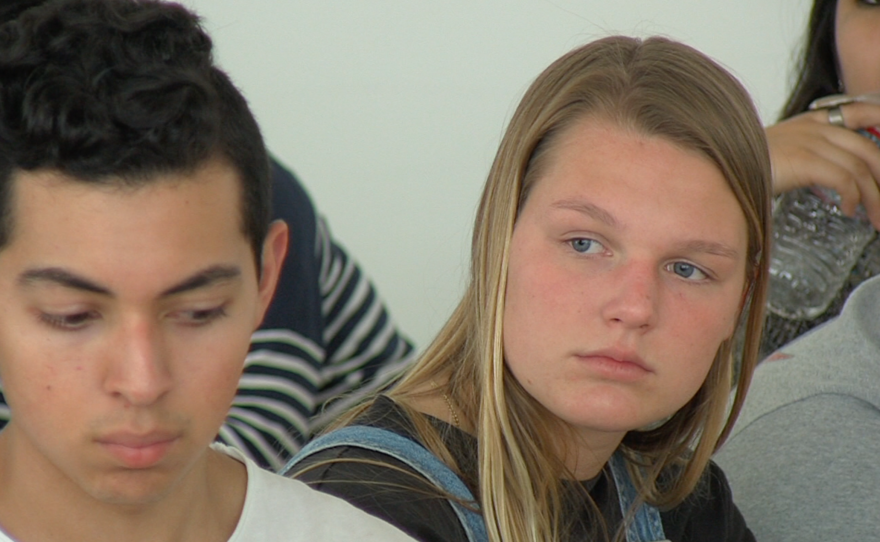When San Diego and Mexico City high school students started collaborating on a video about media violence, they had no idea how to proceed.
The San Diego teenagers associated the topic with the ubiquitous portrayal of violence in media such as music videos and video games. Their Mexican counterparts thought of the journalists being murdered across their home country.
“We spent several hours talking about how we understood the topic and how we wanted to do it differently,” said 18-year-old Helena Villa Cardona of Mexico City.
The students were participating in FOCUS: Youth Empowerment through Social Practice Art, a joint initiative between the Museum of Contemporary Art San Diego and Mexico City’s Tamayo Museum. The goal of the program is for Mexican and American students to learn from each other, specifically in terms of how to solve global problems. They must work together to create multimedia artworks that explore violence in its various forms, including domestic violence and terrorism.
In the end, the students in Villa’s group decided to include both interpretations of the topic, compiling separate videos into one.
“Everybody has a voice, and every voice is different,” Villa said.
"Hear the other"

The museum education curators from both sides of the border said they wanted the students to learn to be more open-minded.
“We find ourselves constantly asking them to step back a little bit and hear the other,” said Cris Scorza, education curator for the Museum of Contemporary Art San Diego. “That has invited them, I think, to start thinking deeper.”
During the collaboration, which took place online until they met in San Diego last week and in Mexico City this week, the bilingual students had to translate for the monolingual students.
The students said they are learning a lot from the experience. Mostly, they said, they are seeing that the two countries suffer from similar problems that manifest in different ways.
Villa of Mexico City said her experience in San Diego made her realize that the U.S. suffers from violence, too – not just Mexico.
“There’s still racial violence in the streets, for example,” she said. “The first night we came in [to San Diego], we were walking down the street and there were a couple of people who started shouting at us, ‘English only!’”
She said she is eager to spread a positive message about Mexico through art.
“While Mexico is one of the countries with a lot of problems in the world, we want to show that we’re not just watching from far away, we want to do something about it,” she said. “We are not that issue. We are trying to solve it, at least my generation is.”
"Art is a great coping mechanism"

Fifteen-year-old Bridget Brightfield, of Encinitas, listened to students discuss a video she recorded of an interview she conducted with her grandmother.
In the video, her grandmother opens up about her time as a victim of domestic violence. In both languages, the students praised Brightfield for her bravery in sharing such a personal experience.
Brightfield said she appreciated having input from both sides of the border.
“It’s nice because it gives you two different cultures and perspectives on everything,” Brightfield said. “It’s the universal problems, it’s not just us, it’s not just them, it’s everyone.”
She said she was attracted to the program because of her passion for art.
“Art is a great coping mechanism,” she said.
Karina Hernandez, a 17-year-old Chula Vista student, helped make a video that explored war and terrorism through symbols, such as images of a rabid dog baring its teeth.
“It’s a really healthy way of dealing with issues that otherwise would be very difficult to approach,” she said.

"We can connect"
Hernandez said she found a lot of similarities between the challenges she and Mexican students face.
“It’s kind of funny how we can be so alike, even though we’re from different places,” she said. “Putting aside the borders, and the nationalities, we can connect.”
Hernandez said that as the child of immigrants who left Mexico, she grew up thinking that country’s challenges were somewhat insurmountable. But she said her Mexico City counterparts have changed her mind.
“Not everybody’s passive,” she said. “People my age especially are very hands on, they're very ... they have ambitions, they have dreams, and they’re willing to work for them.”
She said she feels a greater appreciation for her Mexican roots than before.
“It’s kind of changing my ideals, you know?”






